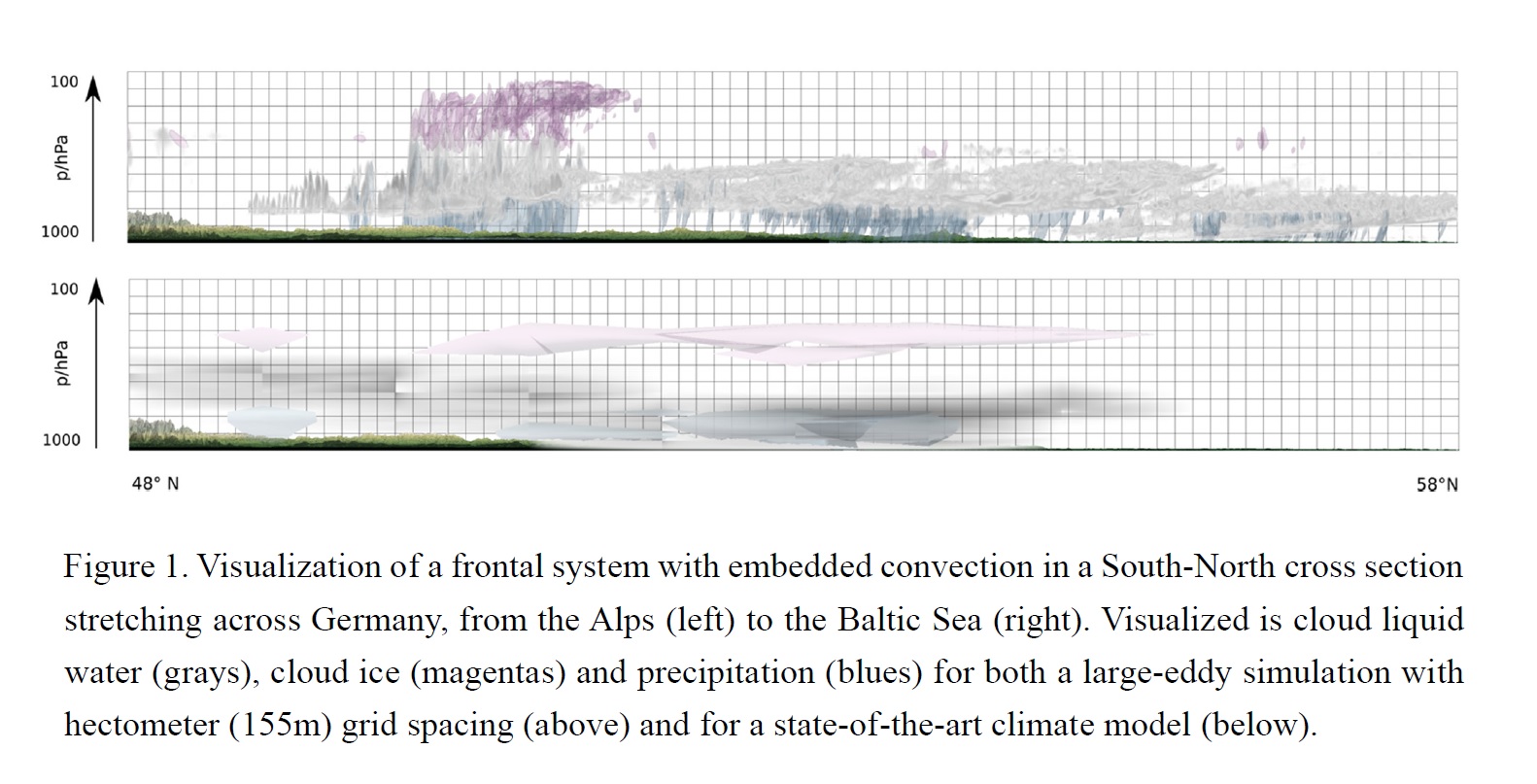JMSJ Highlights
Stevens et al. (2020)
Stevens, B., C. Acquistapace, A. Hansen, R. Heinze, C. Klinger, D. Klocke, H. Rybka, W. Schubotz, J. Windmiller, P. Adamidis, I. Arka, V. Barlakas, J. Biercamp, M. Brueck, S. Brune, S. A. Buehler, U. Burkhardt, G. Cioni, M. Costa-Surós, S. Crewell, T. Crüger, H. Deneke, P. Friederichs, C. C. Henken, C. Hohenegger, M. Jacob, F. Jakub, N. Kalthoff, M. Köhler, T. W. van Laar, P. Li, U. Löhnert, A. Macke, N. Madenach, B. Mayer, C. Nam, A. K. Naumann, K. Peters, S. Poll, J. Quaas, N. Röber, N. Rochetin, L. Scheck, V. Schemann, S. Schnitt, A. Seifert, F. Senf, M. Shapkalijevski, C. Simmer, S. Singh, O. Sourdeval, D. Spickermann, J. Strandgren, O. Tessiot, N. Vercauteren, J. Vial, A. Voigt, and G. Zängl, 2020: The added value of large-eddy and storm-resolving models for simulating clouds and precipitation. J. Meteor. Soc. Japan, 98, 395-435.
Special Edition on DYAMOND: The DYnamics of the Atmospheric general circulation Modeled On Non-hydrostatic Domains
https://doi.org/10.2151/jmsj.2020-021
Graphical Abstract with highlights
Overview:
With increasing computing power, global storm-resolving (kilometer-scale) coupled multi-decadal climate simulations are becoming feasible, and global large eddy simulations for periods of hours to days are becoming imaginable. In this paper we report on a systematic exploration of the added value of kilometer (convective storm resolving) and hectometer (large-eddy resolving) simulation for the representation of clouds and precipitation processes. Novel aspects of the work are: (i) its exploration of the additional benefit of hectometer scales for the representation of precipitation process, adding to a large body of work that finds kilometer scale simulations improve many aspects of the representation of convective precipitation; (ii) an evaluation of the ability of kilometer and hectometer scale simulations to represent important cloud processes; (iii) the close coupling of this evaluation to both observations (ground, airborne and space-based) as well as to models run in modes more characteristic of what is the present state-of-the-art in climate modeling.
Akin to past studies we found an improved representation of precipitation at kilometer scales, in every respect. Refining resolution to hectometer scales adds details and modest quantitative differences. Hectometer scales are found to be more important for the representation of clouds, as their incorporation makes it possible to capture many important aspects of the cloud field, from the vertical distribution of cloud cover, to the distribution of cloud sizes, and to the diel (daily) cycle. Qualitative improvements, particularly in the ability to differentiate cumulus from stratiform clouds, are seen when one reduces the grid spacing from kilometer to hectometer scales. At the hectometer scale new challenges arise, but the similarity of observed and simulated scales, and the more direct connection between the circulation and the unconstrained degrees of freedom make these challenges less daunting. This quality, combined with already improved simulation as compared to more parameterized models, underpins our conviction that the use and further development of storm and large-eddy resolving models applied to realistic domains offers exciting opportunities for advancing understanding of climate and climate change.

The explicit representation of convection that is possible at hectometer scales naturally captures the structure and kinematic features of the storms. The paper reports on these simulations as well as simulations of tropical convection in the ITCZ and neighboring monsoon regions on even larger domains over the tropical Atlantic, of baroclinic systems over the North Atlantic and of extreme rainfall events over East and South Asia. The possibility of performing large-eddy simulation for realistic cases over large and realistic domains also makes it possible to evaluate the approaches more critically, using a wealth of observational data, particularly from ground based supersites and measurement networks.






